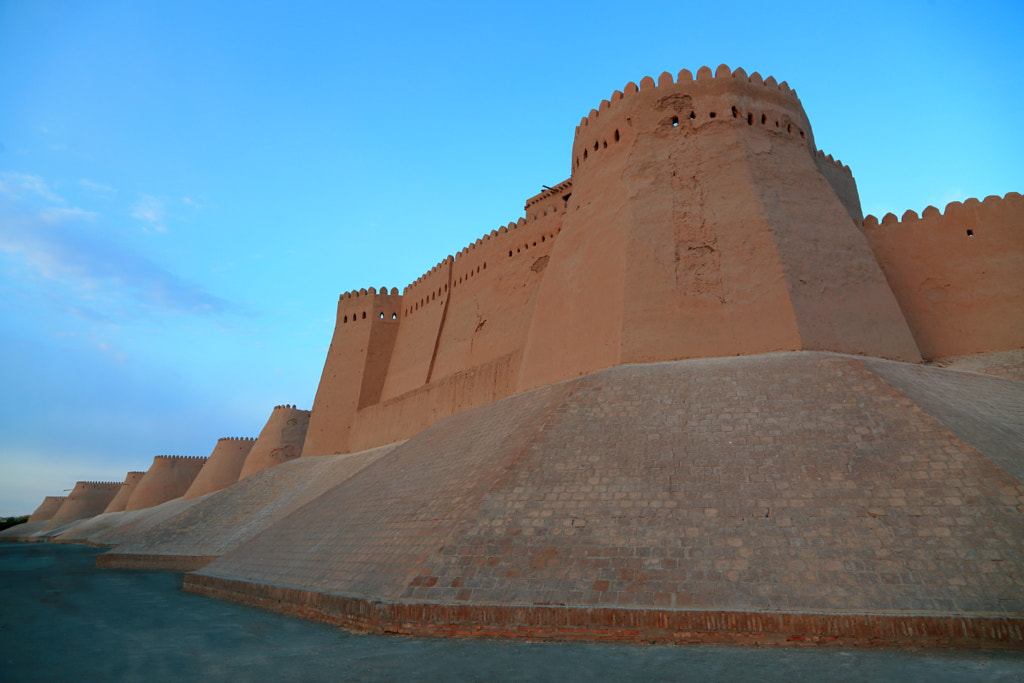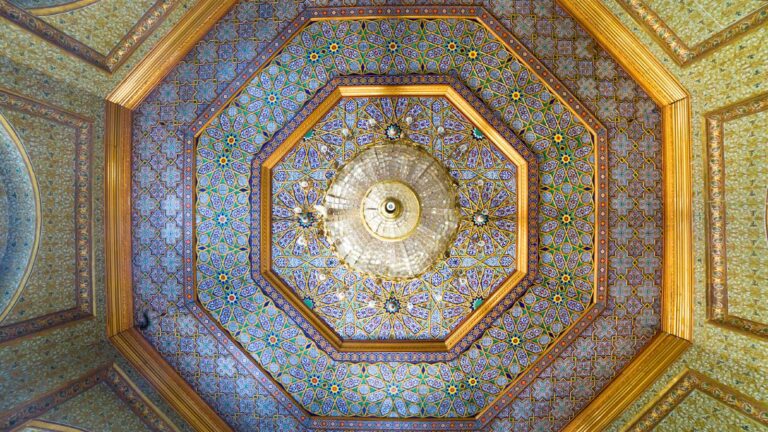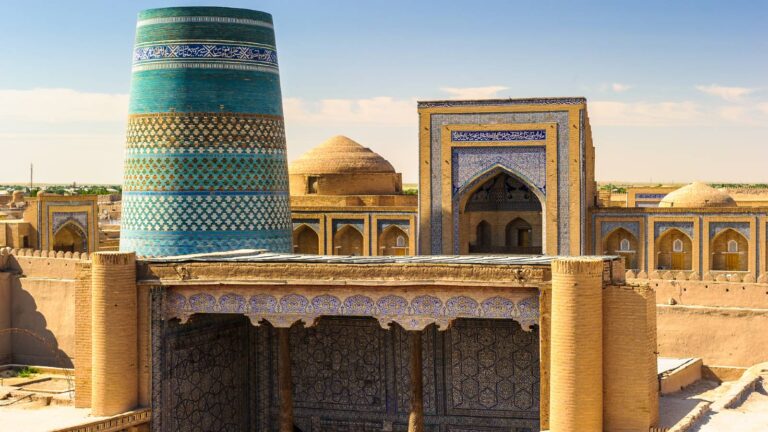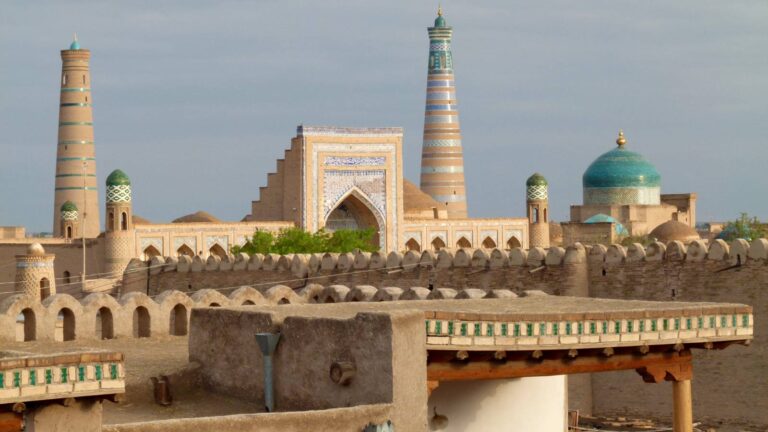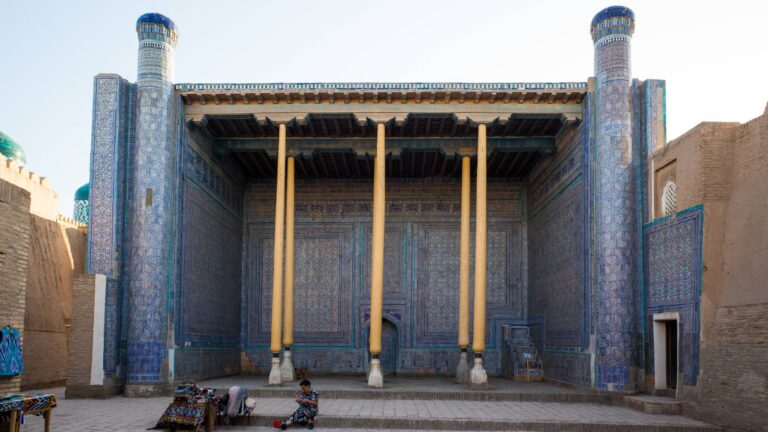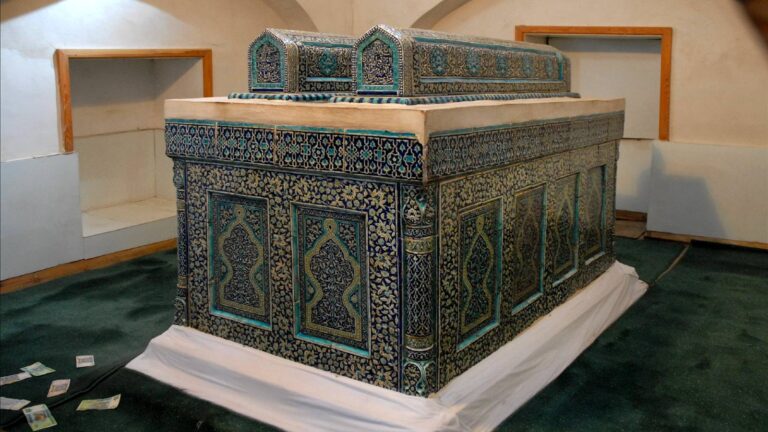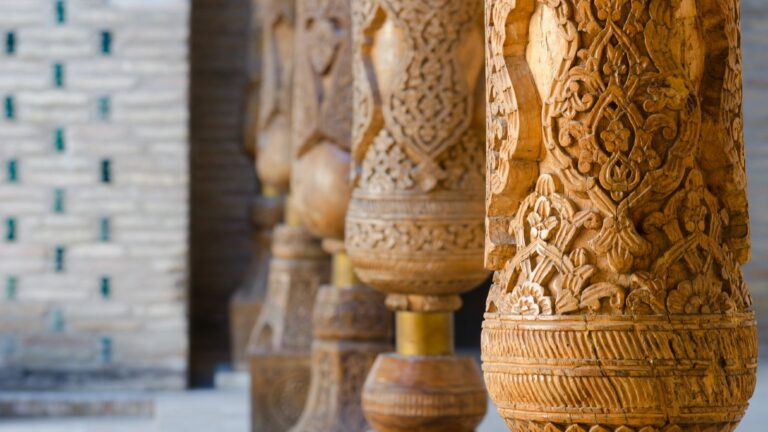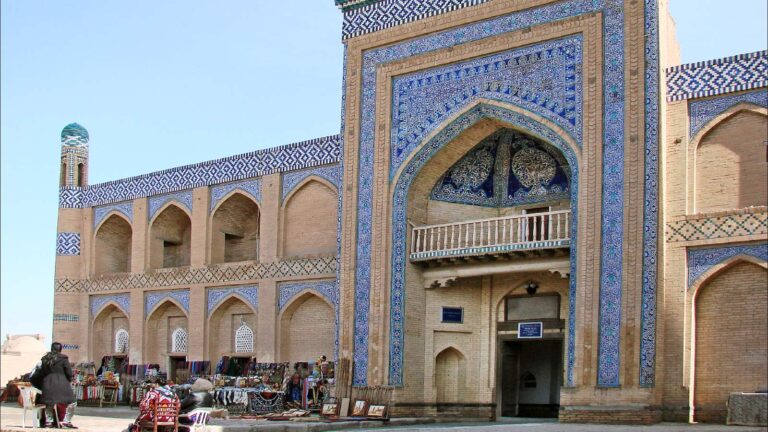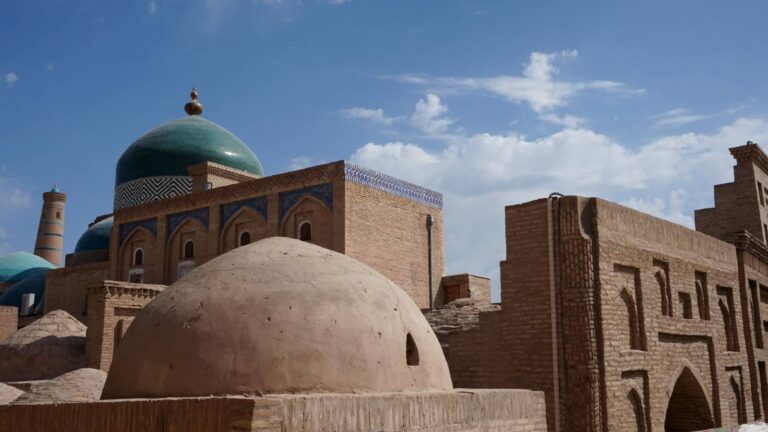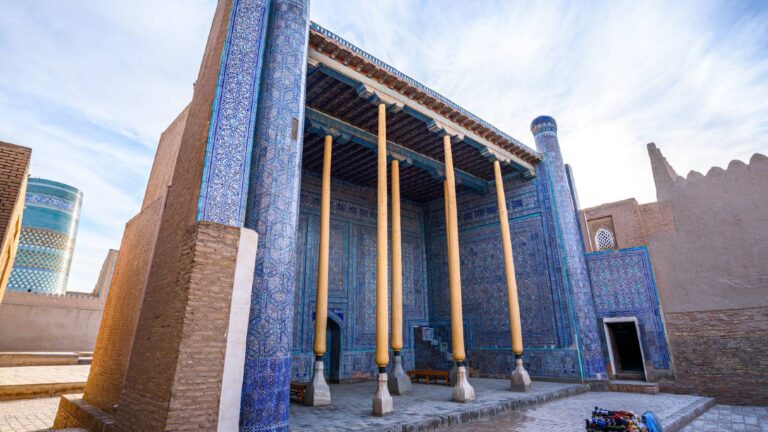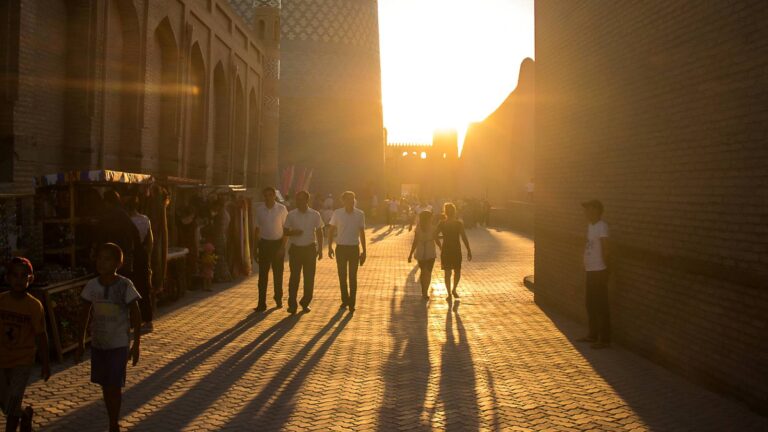Getting There
All types of transport are available to get to Khiva, Ichan-Kala. The International Airport is located in Urgench. From Urgench to Khiva 30 km. There are buses, trolleybus, minibuses and taxis.
with the Train you can get directly to Khiva, as there is a railway station in Khiva.
What to Expect
Many architectural monuments located in Ichan-Kala have been preserved in excellent condition. This makes it easy to imagine how most of the large Central Asian cities looked like in antiquity. The Northern (Bagcha-Darvaza), Eastern (Palvan-Darvaza), Southern (Tash-Darvaza) and Western (Ata-Darvaza) gates have also survived. It is through them that the main roads lead to the city today. Due to the small area, the city is built up very densely. A huge number of mosques, madrasahs, mausoleums dynamically replace each other along the entire tourist path. If you go up to the roof of any of the buildings, you will see a palisade of minarets of different heights, shapes and designs. For the most part, paints of cold muted tones, but with a very intricate combination and ornament. This is what makes Khiva different from other eastern cities, with its own style. Ichan-Kala is a vivid example of this.
History
Ichan-Kala is an ancient city, the walls of which keep traces of more than 500 years of history to this day. This is the inner part of the ancient city of Khiva. The name is literally translated as “inner circle of defense”. As in many eastern cities, in ancient times Khiva was divided into 2 territories, separated from each other by fortifications. There was also an outer circle of defense, located on an even larger territory. Itchan-Kala occupies 26 hectares and is rightfully considered a city-reserve, the status of old Khiva received this status in 1968.
The defensive fortification has been well preserved to this day. On its territory, the well “Kheyvak” is also preserved, from which, according to legend, Sim drank water. The walls of the fortress stretch along the perimeter and are more than 2 kilometers long. The height of 10 meters was sufficient to defend the city from uninvited guests. Every 30 meters, the wall has a small lunge in the form of domed fortifications, in which there are loopholes for archers. There are also jagged protrusions along the entire edge of the wall. The clay wall that protected the city had several gates. They were also part of the defensive fortification.
The remaining gates contain traces of shock towers on either side of the arch, and observation decks rise above them. The passage was made in the form of a long corridor with domes. This is well preserved on Koi-Darvaza. The clay that was used to build the fortress was dug a couple of kilometers from Ichan-Kala, on the territory of Govuk-Kul, where the lake is located today. Apparently, it was formed in the cavity of an ancient clay quarry. The lake is considered sacred. By the way, the clay there is really of high quality, potters are still famous for their products from it.
Facilities Available
More than 60 historical sites and more than 20 museums are located inside Ichan Kala

